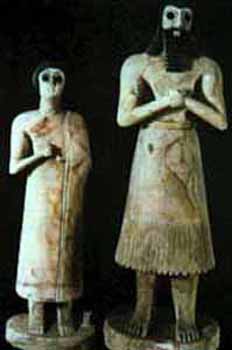Quote:
Originally Posted by Timmy

|
Well.... I'll comment.
Any group of "men" that includes "Aestheticterrorists" is bound to have an angeda. When your fashion styles are driven by political and social agendas then the end result is often not very useful.
However, when fashion is driven by the core cultural needs of a society (like modesty) and by the conditions of their environment, then the resulting cothing will tend to make more sense.
For example: In the Bronze Age (the days of Abraham through the Judges, roughly) men and women in the Levant wore robe and tunic style appeal. This made sense given the way the cloth was woven and provided garments that could be used for a variety of purposes. For example a cloak could be used as a long and cool sun shade during the day and pulled close or used blanket style for warmth at night.
Since both men and women had the same pastoral and nomadic lifestyle their garments were similar in cut, but differed in stylist embellishments - for example the veil (
Genesis 24:65). If you went into the family tent to grab a cloak you would have been able to readily discern which cloaks belonged to the female family members and which to the males. But the cut-out patterns and seams were often similar.
In the cities the needs were a bit different for the different classes of people. In Egypt, those of the trading class and aristocracy wore pleated skirts:

The higher up in rank you went, the "softer" (or some would say "more effeminate") the styles for the men were. In some ways this pattern has been carried down even to taday - just look at some of our "Rock Stars."
If the legendary aspects of Abraham's family life are even close to accurate, his father Terah was a merchant and artisan in Ur. Thus Abraham and Sarah probably looked something like this before taking up the life of wilderness nomads.

I dare say, if a couple appeared on the street in a downtown area today they would not be called "cross dressers" at all, but rather the man's masculine features would be seen to be emphasized by his apparel. Also note: unlike Egypt, the man's skirt which is pleated almost exclusively in Mesopotamia.
One point that obviously stands out is that when a man came of age- he was expected to wear a beard to provide a point of distinction about his manliness. None of this shaving of the face smooth as ordered by the
Popes and as introduced into popular fashion by
sexually promiscuious members of the aristocracy.

